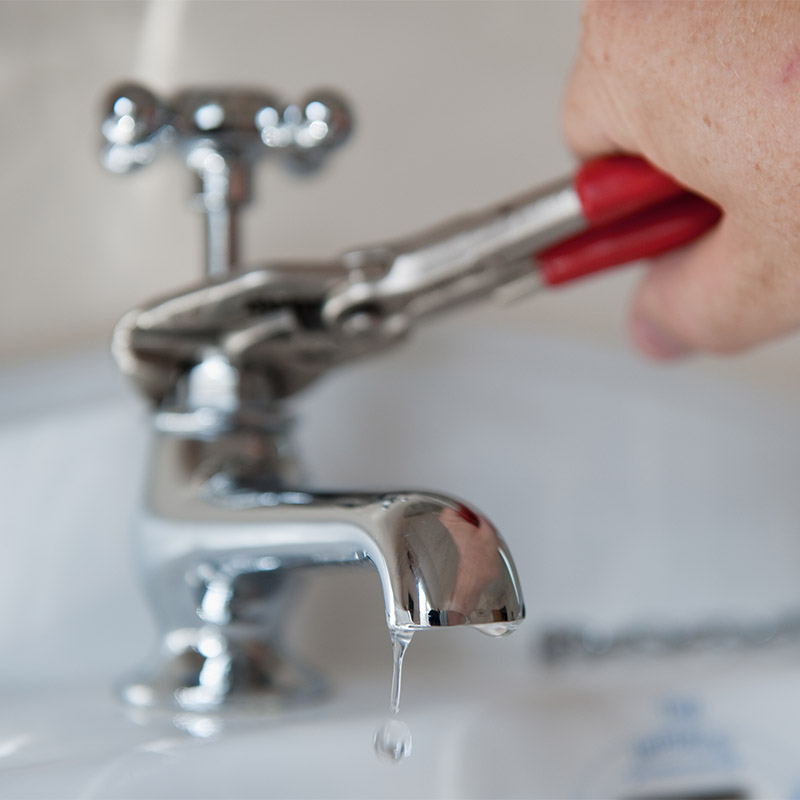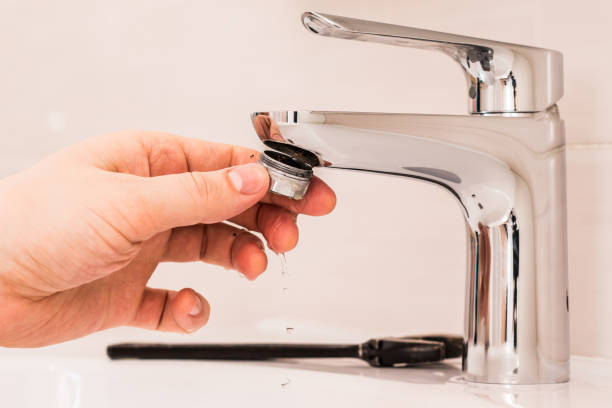Which It's Crucial to Resolve a Malfunctioning Faucet
Which It's Crucial to Resolve a Malfunctioning Faucet
Blog Article
We have come across this post about Water Dripping from Faucet: Why and How to Fix listed below on the net and concluded it made perfect sense to quickly share it with you over here.

Trickling taps might appear like a small trouble, however their influence surpasses simply the inconvenience of the sound. From wasting water to sustaining unneeded financial costs and wellness threats, ignoring a dripping tap can bring about numerous consequences. In this article, we'll delve into why it's essential to address this common house concern immediately and successfully.
Waste of Water
Environmental Effect
Dripping taps add considerably to water wastage. According to the Epa (EPA), a solitary faucet leaking at one drip per secondly can throw away greater than 3,000 gallons of water annually. This not just stress water sources yet likewise impacts communities and wildlife depending on them.
Step-by-Step Guide to Dealing With a Dripping Tap
Devices Required
Prior to trying to deal with a leaking faucet, gather the required tools, consisting of a flexible wrench, screwdrivers, replacement parts (such as washing machines or cartridges), and plumber's tape.
Usual Tap Issues and Their Solutions
Determine the type of tap and the particular issue causing the drip. Usual troubles include worn-out washing machines, corroded shutoff seats, or damaged O-rings. Describe supplier guidelines or online tutorials for step-by-step guidance on fixings.
Financial Costs
Raised Water Expenses
Beyond the ecological influence, leaking taps can inflate water expenses substantially. The accumulated wastefulness over time translates right into greater energy costs, which can have been prevented with timely fixings.
Prospective Residential Property Damage
Additionally, long term dripping can lead to harm to components and surface areas surrounding the tap. Water accumulation can trigger staining, corrosion, and even structural problems if left ignored, causing added repair work expenses.
Health and wellness Worries
Mold And Mildew and Mold Development
The consistent presence of moisture from a dripping faucet creates an excellent environment for mold and mold growth. These fungi not only compromise indoor air quality but also position health risks, particularly for individuals with respiratory system problems or allergic reactions.
Waterborne Conditions
Stationary water in leaking faucets can end up being a breeding ground for bacteria and various other microorganisms, enhancing the risk of waterborne diseases. Impurities such as Legionella germs prosper in stagnant water, potentially leading to significant ailments when consumed or inhaled.
DIY vs. Specialist Repair service
Benefits and drawbacks of DIY Repair Work
While some may attempt to repair a trickling tap themselves, do it yourself repair services come with their very own collection of obstacles. Without correct understanding and tools, DIY efforts can worsen the problem or result in incomplete fixings, lengthening the issue.
Benefits of Working With an Expert Plumber
Employing an expert plumber makes sure that the underlying reason for the dripping tap is dealt with effectively. Plumbing professionals possess the knowledge and tools to identify and fix faucet concerns efficiently, conserving time and minimizing the danger of more damage.
Ecological Responsibility
Private Payment to Conservation
Taking obligation for dealing with leaking taps aligns with wider initiatives toward water conservation and environmental sustainability. Every person's activities collectively make a considerable influence on preserving valuable sources.
Sustainable Living Practices
By prioritizing timely fixings and adopting water-saving practices, people add to lasting living techniques that benefit both present and future generations.
Safety nets
Normal Maintenance Tips
To prevent dripping taps, execute routine maintenance such as cleaning aerators, checking for leaks, and replacing worn-out parts immediately. In addition, take into consideration installing water-saving devices or upgrading to much more effective components.
Relevance of Prompt Services
Dealing with leaking faucets as soon as they're observed stops additional water waste and prospective damage, eventually conserving both water and money over time.
Effect On Residential Property Value
Understanding of Well-Maintained Residential Property
Preserving a building in good condition, consisting of attending to maintenance problems like leaking faucets, enhances its regarded worth and charm among potential buyers or occupants.
Impact on Resale Worth
Characteristics with well-kept plumbing components, including faucets, command higher resale worths in the realty market. Attending to leaking faucets can add to a favorable impression throughout property inspections and arrangements.
Conclusion
Addressing a trickling faucet goes beyond plain benefit; it's an important action toward conserving water, minimizing monetary expenses, and safeguarding wellness and home. Whether through do it yourself repair work or specialist support, doing something about it to take care of dripping taps is a small yet impactful method to promote accountable stewardship of resources and add to a much healthier, a lot more lasting future.
How to Fix a Leaky Faucet: Step-by-Step Repair Guide
A leaky faucet may seem like a simple annoyance, but if it's not fixed promptly, that leak could cost hundreds to potentially thousands. From water damage to mold, mildew, and high water bills, even a tiny leak can be catastrophic if left unattended. Damage like this can even affect the overall value of your home, so it's important to take the right approach for leaky faucet repair. You may need the help of a plumber in some cases, but we've got a few tips you can try on how to fix a leaky faucet before calling the pros.
Four Faucet Types
When you're learning how to fix a leaky faucet, the first step is knowing what kind of faucet you're working with! There are four common types.
Cartridge Faucets
Cartridge faucets come in one- or two-handled varieties. In one-handled cartridge faucets, hot and cold water combines in a single cartridge. In the two-handled versions, hot and cold water are controlled separately and mixed in the faucet.
Ball Faucets
Ball faucets have a single lever you push up and down to adjust the pressure and rotate to change the temperature. A slotted metal ball controls the amount of water allowed into the spout.
Compression Washer Faucets
They're the oldest type of faucet, but they're still used in many homes — especially older ones. Compression faucets have two separate handles that, when turned, raise or lower the washer that seals a water valve. This valve stops water from flowing through the faucet when it is turned off.
Disc Faucets
Disc faucets rarely need to be repaired due to their maintenance-free design. The water flow is controlled by two discs — the upper one raises and lowers against a fixed lower disc, creating a watertight seal. If your disc faucet starts leaking, you may need to replace the seals or clean residue buildup from the inlets.
Fixing a Leaky Faucet
Step 1: Turn Off the Water
Whether you're learning how to fix a leaky bathtub faucet or how to fix a leaky kitchen faucet, always turn off the water supply to your working area when you're fixing a leak. The last thing you want is a flood added to your list of things to fix.
Look for the shutoff valves below your sink or around the tub and turn them clockwise to stop the water flow. If your faucet doesn't have shutoff valves, you may need to turn off the water for the whole house. Check to make sure it's off by turning the faucet on. If nothing comes out, you're ready to start the repair.
Step 2: Take Apart the Faucet
How you disassemble your faucet depends on the type of fixture you have. You can use a flathead screwdriver to remove the caps on top of the handle or handles for cartridge and compression faucets. Inside, you should see handle screws. Unscrew these with a screwdriver to remove the handle.
Disc- and ball-style faucets will typically have an inlet screw near the handle, and removing that will reveal the interior of the faucet.
Detach the Valve Stem
For cartridge- and compression-style faucets, you'll see the inner valve stem or cartridge once you remove the faucet handles. If you have a compression faucet, unscrew the brass valve stem. If you have a cartridge faucet, pull out the cartridge. If your cartridge has been in place for a while, it may require some tools or extra force to remove it due to mineral deposits.
Examine and Replace Parts
Once you've removed the parts, check them out to confirm what needs to be replaced. You may see corroded rubber washers, O-rings, stems, or cartridges. On a ball-style faucet, check the seats and springs for damage.
If you need to repair a leaky disc faucet, check the inlet and seals on the lower disc.
Once you determine what parts must be replaced, visit your local hardware store. Bring the damaged parts with you to ensure you can purchase the correct components to replace them.
Clean Valves and Faucet Cavity
If you've removed a stem or cartridge, you may notice mineral buildup in the faucet's threads. Use white vinegar to clean the valve seat by soaking it for a few minutes, then scrub it away with a soft toothbrush and rinse with warm water. You can also clean the interior of the faucet in the same way.
Reassemble the Faucet
Once your faucet is cleaned and the required parts have been replaced, it's time to reassemble it. Put the pieces back together and slowly turn the water supply back on. Doing this slowly is crucial because too much initial water pressure can damage the new hardware you've just installed.
https://homewarranty.firstam.com/blog/how-to-fix-leaky-faucet

I recently found that post on Should I Repair or Replace a Leaky Faucet? when doing a search on the web. Do you know another person who is fascinated about the topic? Take a moment to share it. I enjoy reading our article about What Causes Leaky Faucets & How To Fix Them.
Report this page